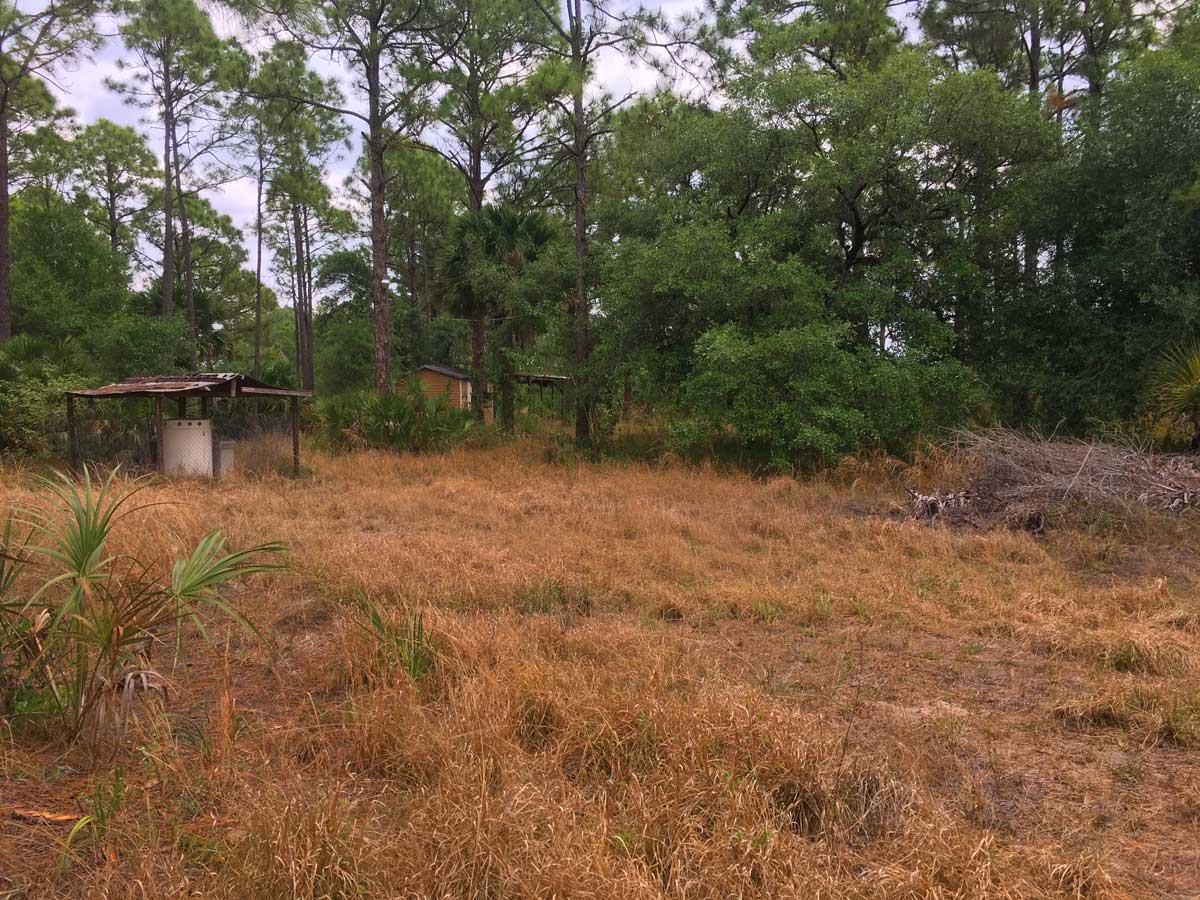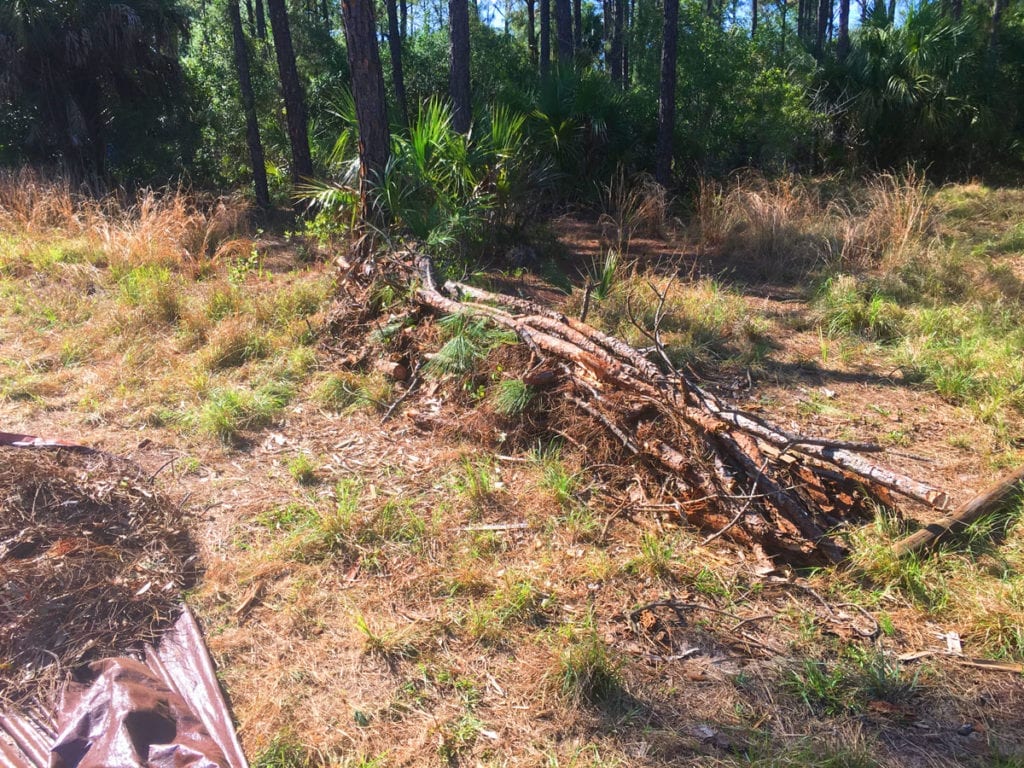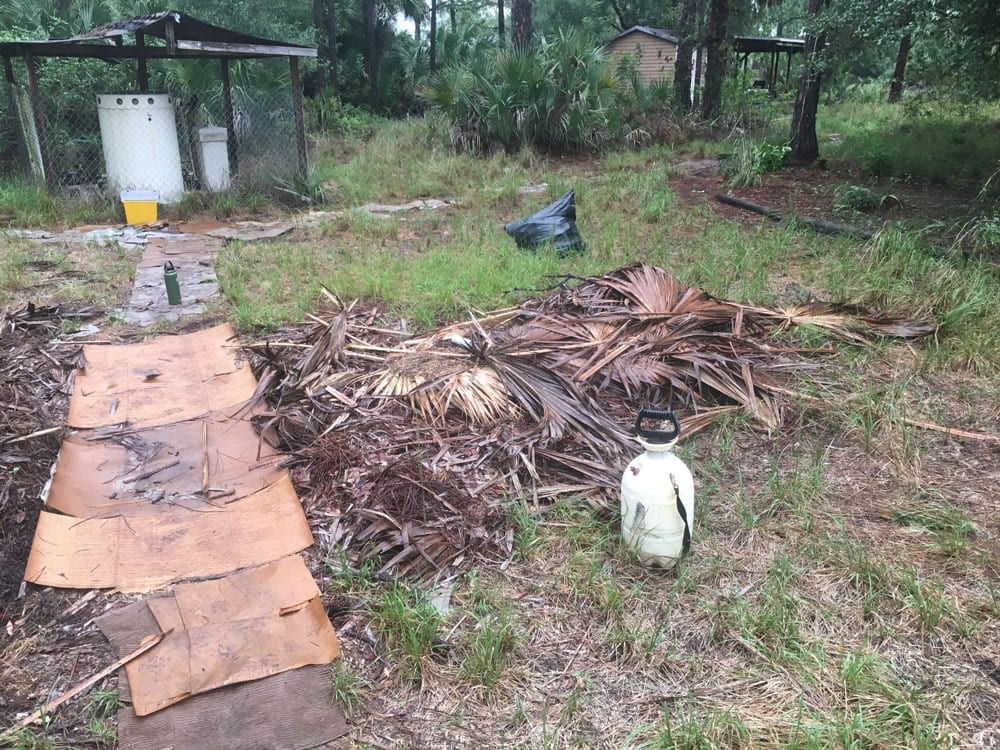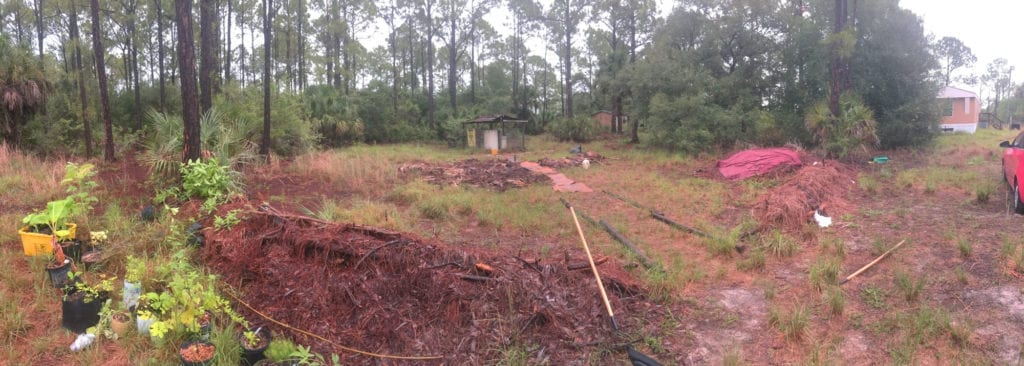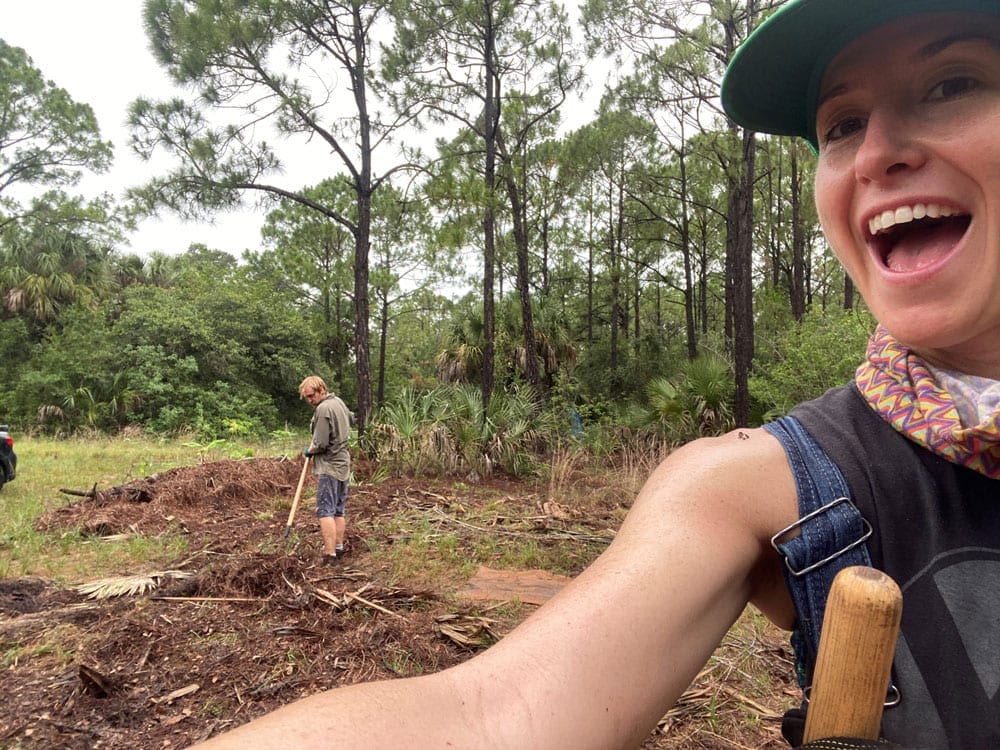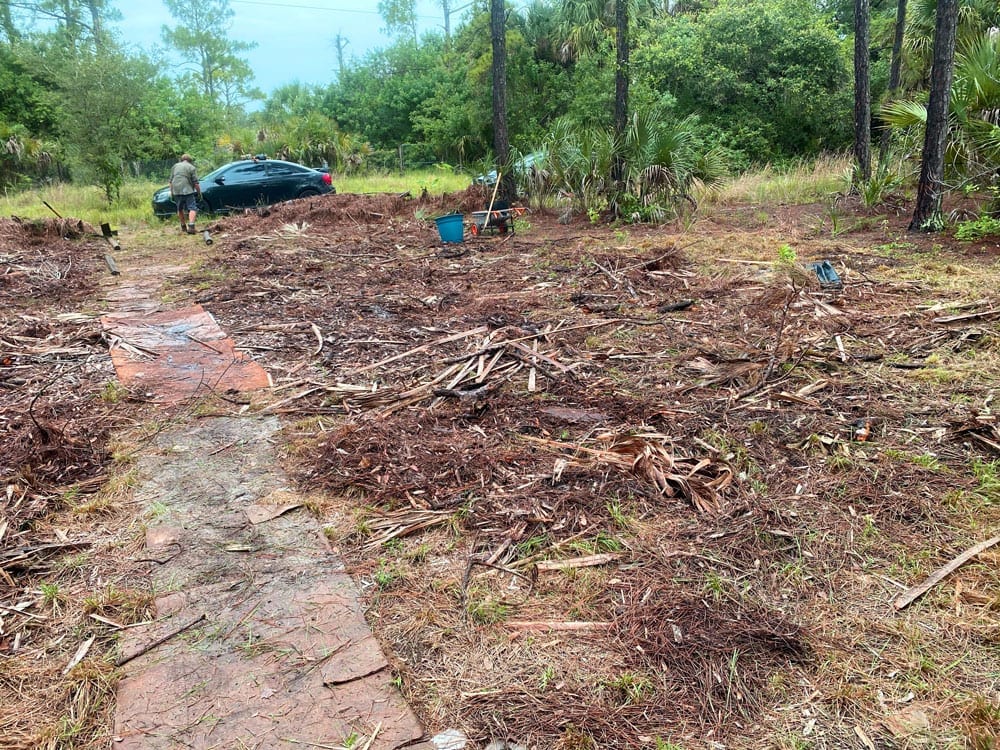Cart is empty.
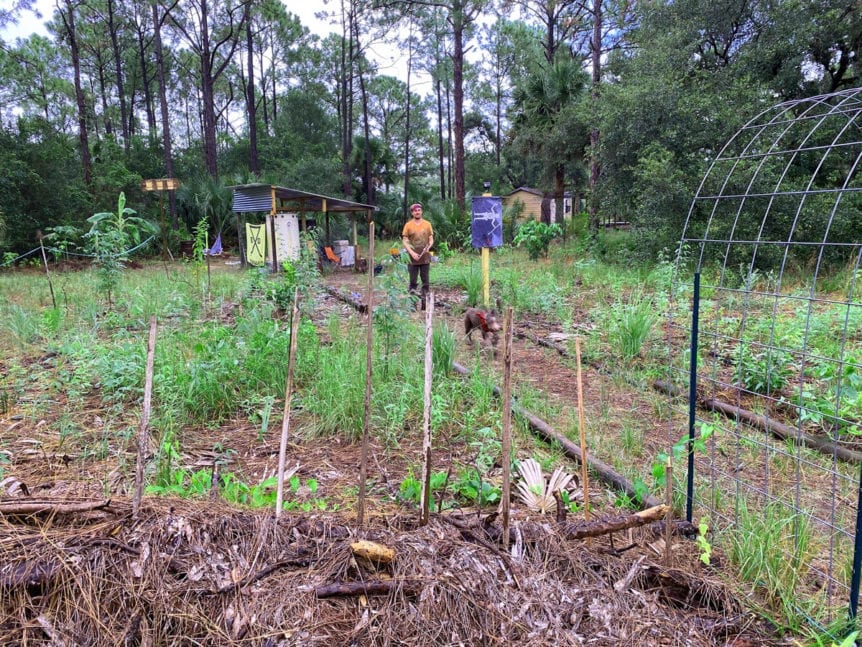
How to Start a Food Forest
We chose our spot for the food forest first. It was sheltered by pines and live oak trees on the North, West and East. Having a South facing opening is perfect for a garden and the trees surrounding will help block wind and the harsh Florida summer sun. It is also close to the well which is the water source for the system.
Next I started the Hugelkultur with the wall running parallel to the South so that sun lovers can be planet on the South side and shade plants can be on the north of it.
A Hugelkultur is a farming technique where a mound constructed from decaying wood debris and other compostable biomass plant materials is later planted as a raised bed. I dragged large logs to start it, then added bigger sticks, then smaller stick, then sand and pine needles to fill the gaps.
I used a tarp with a rope tied to 2 corners, loaded it with material from the forest and dragged it to the Food Forest site. I also made a loop on the other end and put it on my car's trailer hitch to pull the larger logs.
A Hugelkultur is a farming technique where a mound constructed from decaying wood debris and other compostable biomass plant materials is later planted as a raised bed. I dragged large logs to start it, then added bigger sticks, then smaller stick, then sand and pine needles to fill the gaps.
I used a tarp with a rope tied to 2 corners, loaded it with material from the forest and dragged it to the Food Forest site. I also made a loop on the other end and put it on my car's trailer hitch to pull the larger logs.
We made a few huge piles of compost. Basically we stacked dead debris like pine needles, sticks and palms on the ground. Then we put green palms, grass, branches and leafs and put those on the dead debris. We did this over and over like making forest lasagna. The nitrogen in the green material will help break down the carbon in the dead material. We stacked each pile around 4 foot high. We waited for it to rain and after the pile was soaked we covered it with a tarp to cook under and begin composting.
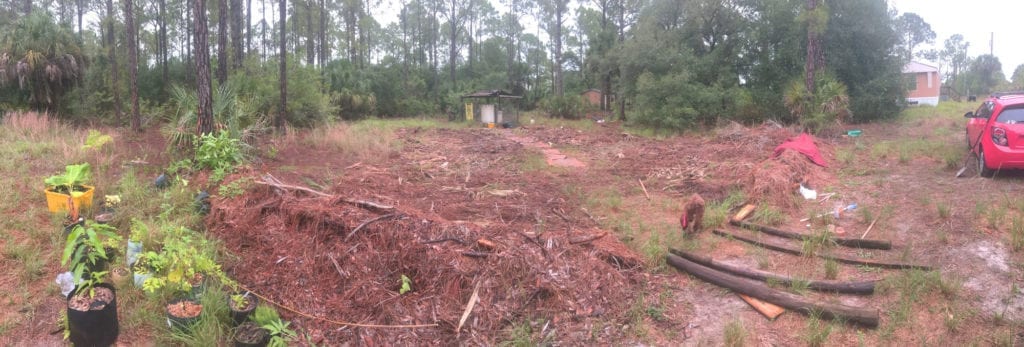
Once the Food Forest floor's sand was covered with the compost we marked it off and began planting out pioneer species the will fix nitrogen into the ground and begin the soil creation process.
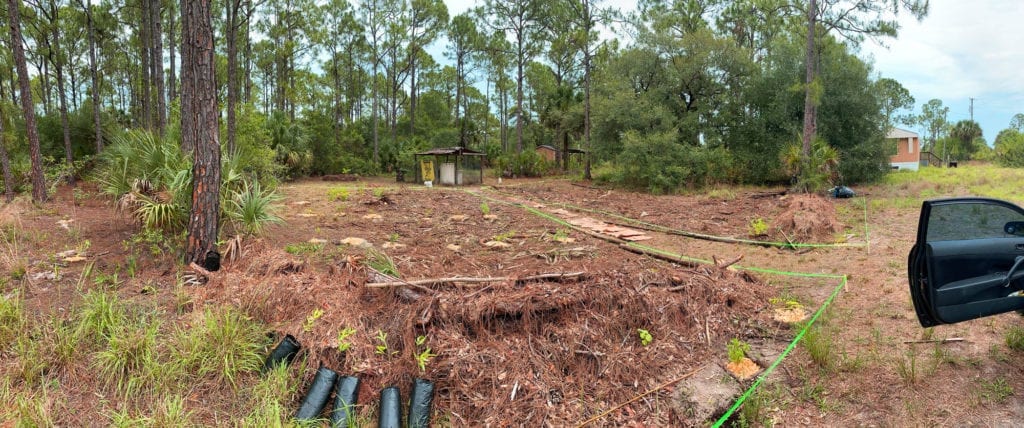
A month and a half after spreading out the compost we had hundreds of pigeon pea trees around a foot tall. Over this time we also planted dozens of fruit trees and perennial vegetables throughout the forest, treading lightly to not step on any small pigeon pea trees. We also set up a simple irrigation system put putting this sprinker on a 4x4 stuck into the ground and running the hose underground in a 1' trench we dug.

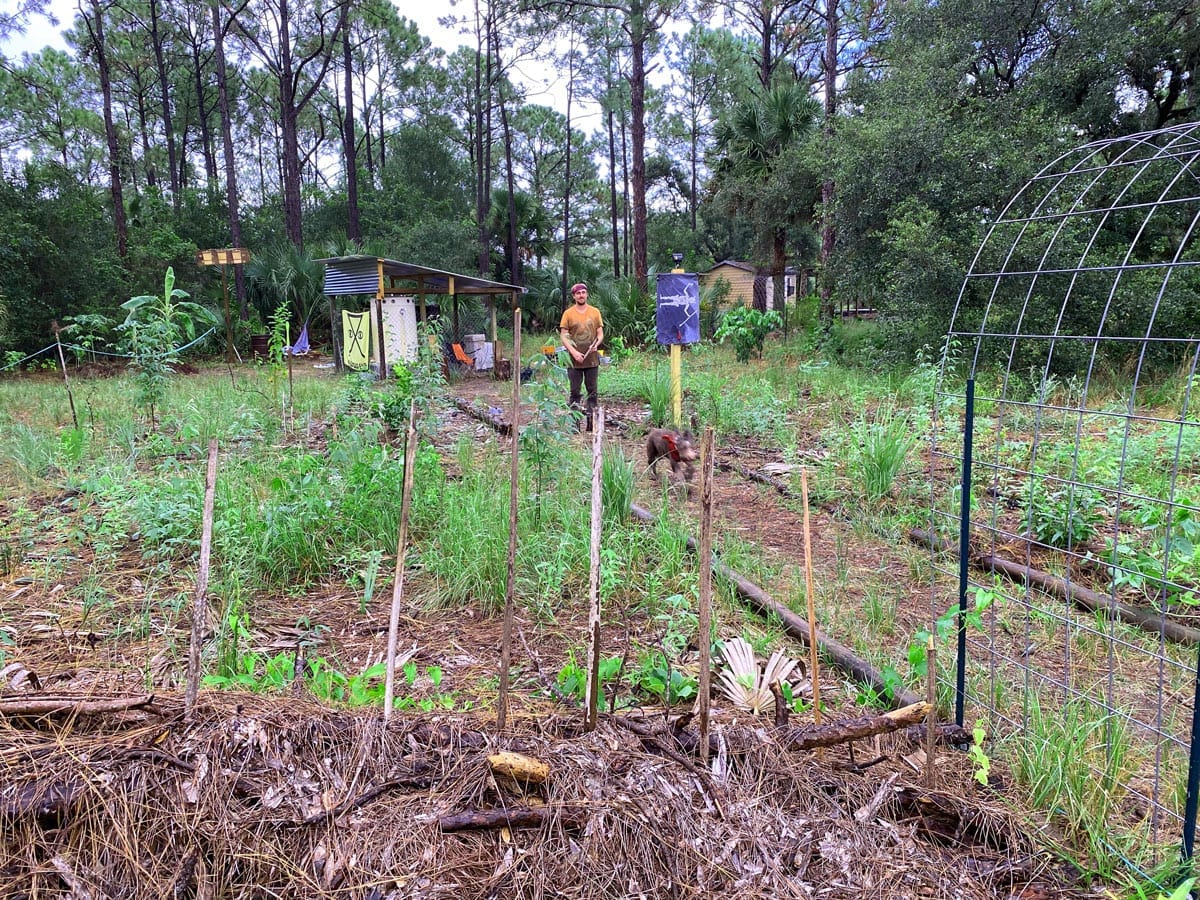
We used these items
We like them and would recommend them to you for this project
As an Amazon Associate I earn from qualifying purchases.
This cost is not added to your purchase, it is a percentage from Amazon for bringing people to their website for the transaction.
This cost is not added to your purchase, it is a percentage from Amazon for bringing people to their website for the transaction.

